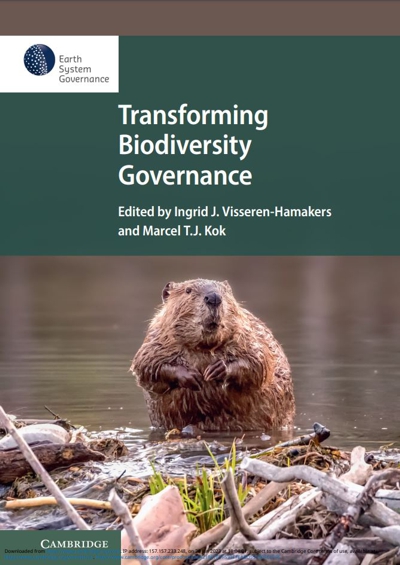Publication: Transforming Biodiversity Governance
To download the publication please click on the download link at the bottom of the page
Edited by: Ingrid J. Visseren-Hamakers and Marcel T.J. Kok
CNARC member: Fridtjof Nansen Institute (FNI)
Introduction: This book is written at a vital time for biodiversity around the world. Biodiversity is threatened more than ever before in human history, and nature and its vital contributions to people are deteriorating worldwide, as highlighted by various recent reports (CBD,2020a; EEA, 2019; IPBES, 2019; WWF, 2020). This is not only a problem for these ecosystems and their inhabitants, but also for humans, since we depend on biodiversity for many vital processes such as food production and provision of natural resources. These risks of biodiversity loss are increasingly recognized among policymakers, academics and society at large (IPBES, 2019; WEF, 2021).
The worldwide deterioration of biodiversity is taking place despite over half a century of efforts to combat biodiversity loss by governments, civil society and, increasingly, business, at all levels of governance from the local to the global. Past and ongoing efforts are therefore not effectively supporting the conservation and sustainable and equitable use of biodiversity, and this worldwide failure to address biodiversity loss has created a growing consensus that fundamental, transformative changes are needed in order to reverse these trends, or “bend the curve of biodiversity loss” (IPBES, 2019; Mace et al., 2018).
This increasing attention for transformative change can be seen as the start of a new, third era in global biodiversity governance. During the first era, early nature conservation policies were developed in silos – the focus was on conserving biodiversity and developing and better managing protected areas. These older intergovernmental processes, such as the Convention on International Trade in Endangered Species of Wild Fauna and Flora (CITES), the Ramsar Convention on Wetlands and the Convention on the Conservation of Migratory Species of Wild Animals (CMS), date back to the 1970s. (to read more please follow the download link)
Article pointed out by FNI: Industry responses to evolving regulation of marine bioprospecting in polar regions pp. 200-218.


